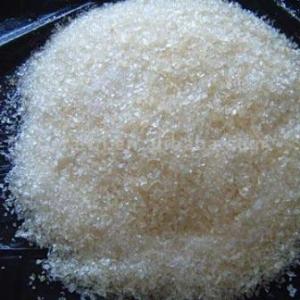There are five different types of chemical weathering, oxidation, hydrolysis, carbonation, organic acids, and acid precipitation. Oxidation is the process by which elements combine with oxygen. This type of chemical weathering often occurs in rock that has iron-bearing minerals, such as hematite and magnetite. Most soil or rock that has a red tint to it is due mainly to the presence of iron oxide produced by oxidation.

Hydrolysis is the change in the composition of minerals when they react chemically with water. A type of feldspar combines with water and produces a common clay called kaolin. During this reaction, hydronium ions displace the potassium and calcium atoms in the feldspar crystals, which changes the feldspar into clay.

Carbonation is when carbon dioxide, CO2, from the air dissolves in water, H2O. Carbonic acid possesses a higher concentration of hydronium ions than pure water does, thus speeding up the process of hydrolysis. The metamorphosis of minerals into a carbonate is called carbonation. An example is when carbonic acid reacts with calcite, a major component of limestone, and converts the calcite into calcium bicarbonate.

Organic Acids are acids that are naturally produced by certain living organisms. Lichens and mosses grow on rocks, producing weak acids that are able to weather the surface of the rock. These acids seep deep into the rock, thus producing cracks that will eventually cause the rock to split apart.
Acid Precipitation is precipitation, such as rain, sleet, or snow, that contains a high concentration of acids, often because of the pollution of atmosphere. Acid Precipitation can weather some rocks more quickly than normal precipitation might. Many historical monuments have been damaged by acid precipitation.
